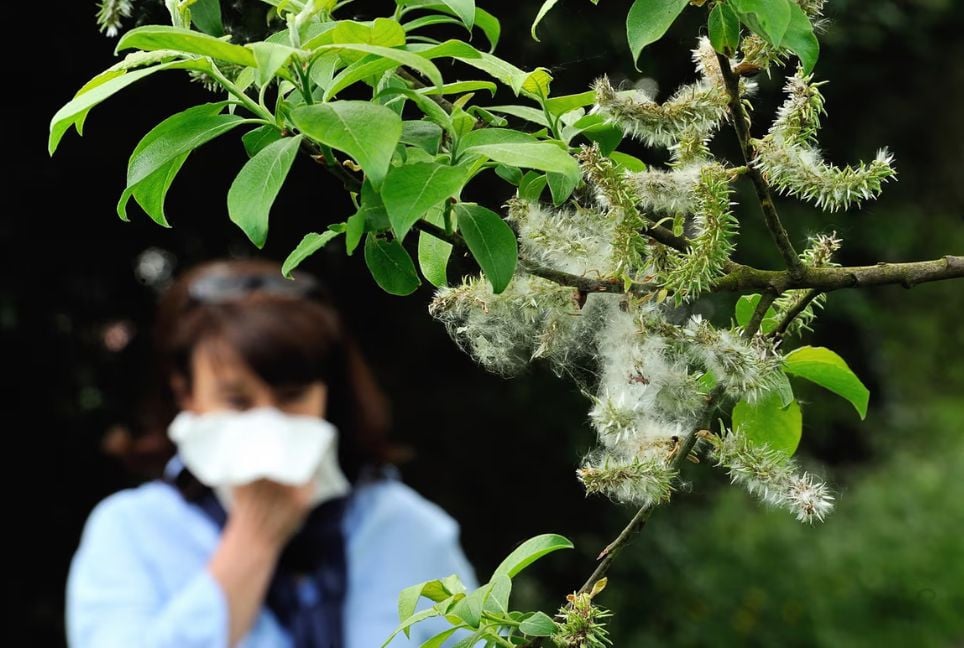Rising global temperatures are intensifying seasonal allergies and triggering alarming health events like thunderstorm asthma, scientists warn. Climate change is lengthening pollen seasons, increasing pollen concentration, and making symptoms more severe—posing a growing risk to allergy sufferers worldwide.
One of the most tragic illustrations of this trend occurred in Melbourne, Australia, on November 21, 2016. Around 6 pm, a thunderstorm caused a sudden spike in respiratory emergencies. Emergency phone lines were overwhelmed, ambulances couldn’t reach many in need, and hospitals admitted nearly ten times the usual number of asthma patients.
Ten people died, including a 20-year-old student. Survivors described their symptoms escalating within 30 minutes.
Experts later confirmed this was a major case of "thunderstorm asthma." Such events occur when storms break apart pollen grains into microscopic fragments, which are then showered back to Earth. These tiny particles can deeply penetrate airways, even affecting people without a history of asthma. Melbourne has recorded at least seven major thunderstorm asthma events since 1984, but similar incidents have also been seen in the UK and the US.
The root cause is increasingly clear: climate change. Paul Beggs, an environmental health expert at Macquarie University, says warming temperatures are altering pollen patterns—affecting their type, seasonality, and concentration.
He believes climate change likely played a role in the 2016 Melbourne event and stresses that such extreme events may become more frequent.
Scientists now confirm that warmer temperatures, combined with rising CO₂ levels, are lengthening pollen seasons. A 2022 study found pollen seasons could start 40 days earlier and end 15 days later by the end of the century, adding up to two more months of symptoms for hay fever sufferers each year.
In the US, pollen levels this year are predicted to be higher than average across 39 states.
One of the most potent contributors is ragweed—a plant capable of producing up to one billion pollen grains per season. Research has shown that rising CO₂ not only increases the quantity of pollen ragweed produces but may also make it more allergenic. Between 1995 and 2015, cities in North America saw their ragweed pollen seasons lengthen by up to 25 days.
The same trends are seen worldwide. While ragweed originated in North America, it has spread across Europe, Asia, South America, and Australia. In Hungary, about 60% of the population is sensitive to its pollen. Without major intervention, airborne ragweed pollen is expected to be four times higher by 2050.
Additional threats come from urban planting practices and the spread of other allergenic plant species. Urban areas often favor male trees to avoid fruit and seed litter, but these produce more pollen. Poor planning can inadvertently worsen allergy conditions.
Scientists stress that efforts to reduce carbon emissions are essential. Meanwhile, direct actions like those taken in the early 20th-century US—hiring teams to uproot ragweed—are proving effective in places like Berlin and Switzerland, which recently banned ragweed imports and launched public removal campaigns.
Improved urban planning, real-time allergen monitoring, and thoughtful plant choices can also help. While several countries track pollen counts, most do not measure allergen levels, which are more accurate indicators of health impacts. "We should be moving towards that," says Elaine Fuertes from Imperial College London.
Ultimately, climate change is making life harder for allergy sufferers globally. Without swift action, both everyday discomfort and life-threatening allergy events are likely to become more frequent. As Beggs puts it, “We have the studies now to show that it’s really having an impact on human health. And there’s more to come.”
Source: BBC
Bd-pratidin English/FNC



































































